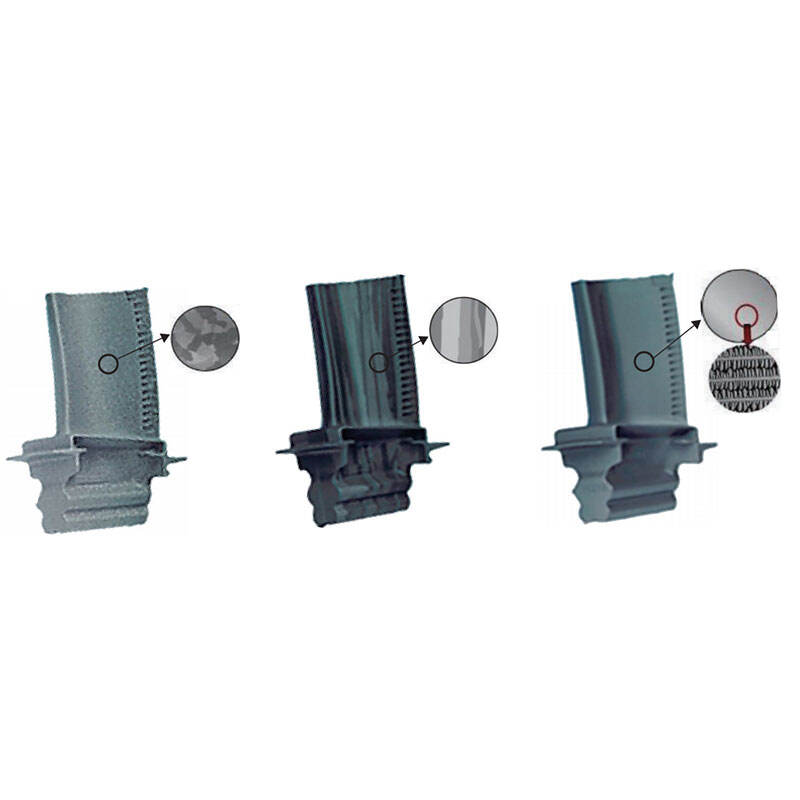Understanding more about the innovative turbine compressor blades within a world of engines, and what role they play in performance improvement and fuel savings. Designed to withstand tough conditions, these blades flow air better than any other blade on the market today. Groundbreaking innovations in compressor blade technology have created great excitement among companies within the aerospace and energy industries as they look to improve engine efficiency and longevity.
This all-new compressor blade is set to become a gamechanger and it also turns out to be one of the more innovative breakthroughs in this sector thanks to 3D printing. This advancement in technology, previously impossible through traditional manufacturing techniques manufactured by a single cut can produce intricate geometries. In addition, 3D printing led to weight savings in compressor blades by avoiding typical assembly processes.
In addition to the 3D printing of these compressor blades, advanced computer modeling and simulation are being used as tools in optimizing blade performance. The result: designers can identify regions of the blade where flow stress is high and simulate airflow to hone how these blades will perform under pressure, making tweaks as needed to boost a blade's lifespan.
A Improved Blades on the Compressor Makes for a Better Engine
The company has also specialized in developing innovative compressor blades which are crucial to the efficiency and performance of modern engines. The blades have been sculpted to help direct more air flow into the engine cylinder which allows for a greater power output with lower fuel cutting costs. This means better fuel efficiency, lower emissions.
Innovative compressor blades are just one of the ways that help a engine perform better as it increases compression ratios in an engine. It folds up air, which compresses more volume of that medium into a limited space and allows for subsequent hyper-efficient combustion. Manufacturers can improve the fuel efficiency of their engines also reduce emissions as a side effect by optimising compression ratio.
One way in which innovative compressor blades improve engine performance is by making the blade lighter. Lighter blades mean less power is needed to spin the blade which increases cutting performanc. A lighter turbine blade, on the other hand has the added benefit of decreasing weight to that specific portion of engine therefore improving power-to-weight ratio and possibly allowing for an increase in overall performance.
Revolutionising Aerospace and Energy with Superior Blades
The development of advanced compressor blades has the space to disrupt both aerospace & energy industries. Blades are key components in modern engines, which can play a critical role on the efficiency of performance for these industries.
In the aerospace market, advanced compressor blades could also enable more fuel-efficient and environmentally friendly planes. Moreover, this blades could help to develop more powerful and sophisticated engines for faster and cheaper modes of air transportation.
In the energy sector, improved compressor blades may improve efficiency in power generation systems. Optimally running these systems not only helps reduce the environmental footprint that each company leaves behind, but also increase it's financial position.
High-Performance Blade Material Specified
High-performance turbine compressor blade production would not be possible without the use of state-of-the-art materials. They are handlings that ready to resist anything up close and personal as temps, weights superior airflow levels for the engine.
Compressor Blades: Titanium is one of the most important materials used for production compressor blades. Titanium is known for being stronger than iron, and Titanium can also withstand high temperatures and pressures. Moreover, its anticorrosion layer makes it an excellent choice for aerospace and energy requirements as well.
Composites are also a state-of-the-art material used in manufacturing of turbine compressor blades. Composites are made from a combination of carbon fibers and resins to create strong, lightweight materials. Composites can be customized, allowing manufacturers to create complex geometries and shapes unlike any that could have been made with traditional materials.
Better Blades for Modern Engines
The engines of tomorrow demand next-generation compressor blades that are a blend of advanced computer modeling, 3D printing and simulation techniques to take shape. Designers begin by modeling the shape of the blade digitally, then run computer simulations to further optimize it for performance and durability.
With the digital model optimized, an additional 3D-printed prototype of blade is produced. This prototype is then tested in different conditions to determine whether it performs satisfactorily and has a good level of durability.
After the prototype has been tested successfully, next up is to put it into production and retrofit modern engines with a new design. Needless to say, this involves a great deal of testing and validation in order to show that the blades achieve their expected performance throughout myriad real-world environments.
Thus, if we were to sum up modern technology of turbine compressor blades allows better engine performance and much lower fuel consumption. They are individually engineered developed to withstand extreme conditions and provide the highest air flow into the engine. The arrival of a new very high performance generation compressor blades should be ground breaking for Aerospace and Energy industries; more effective, cleaner system will soon become reality. Titanium and composites are used to create these blades because of special materials performance capabilities needed, with a blend between intelligent computer programs, 3D printing innovation as well as testing techniques.
 EN
EN
 AR
AR
 BG
BG
 HR
HR
 CS
CS
 DA
DA
 NL
NL
 FI
FI
 FR
FR
 DE
DE
 EL
EL
 HI
HI
 IT
IT
 JA
JA
 KO
KO
 NO
NO
 PL
PL
 PT
PT
 RO
RO
 RU
RU
 ES
ES
 SV
SV
 TL
TL
 IW
IW
 LV
LV
 LT
LT
 SR
SR
 SK
SK
 SL
SL
 UK
UK
 VI
VI
 ET
ET
 HU
HU
 TH
TH
 TR
TR
 AF
AF
 MS
MS
 GA
GA
 IS
IS

